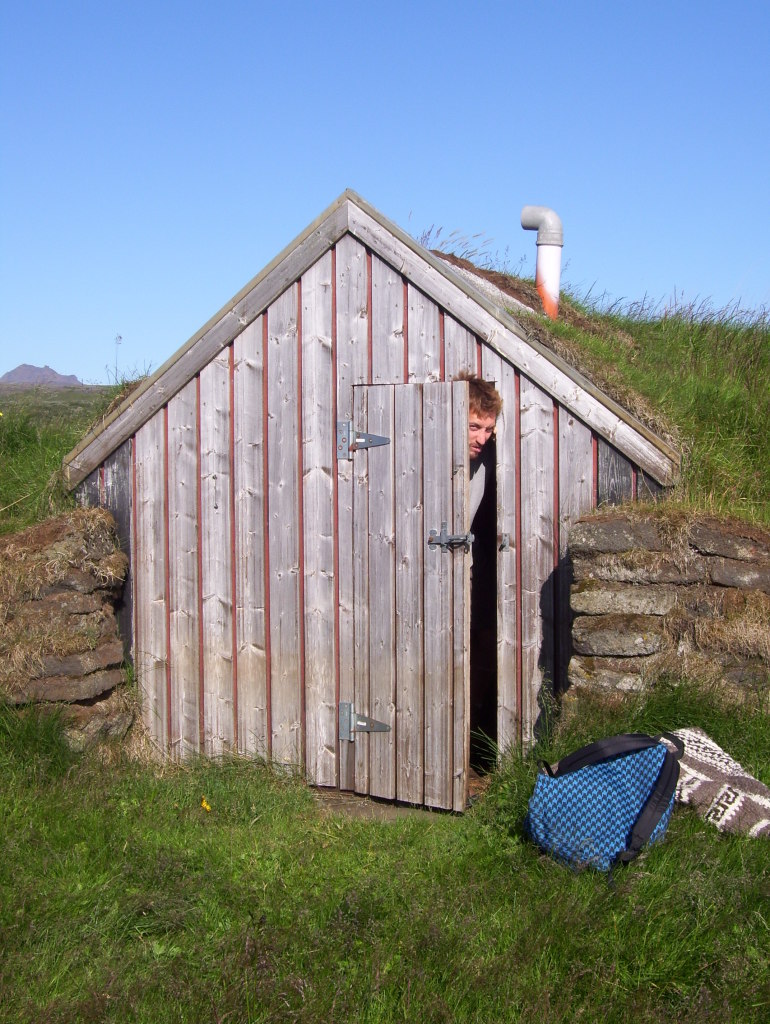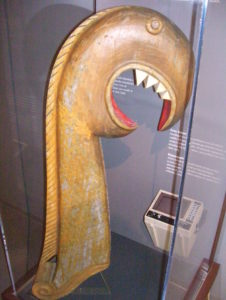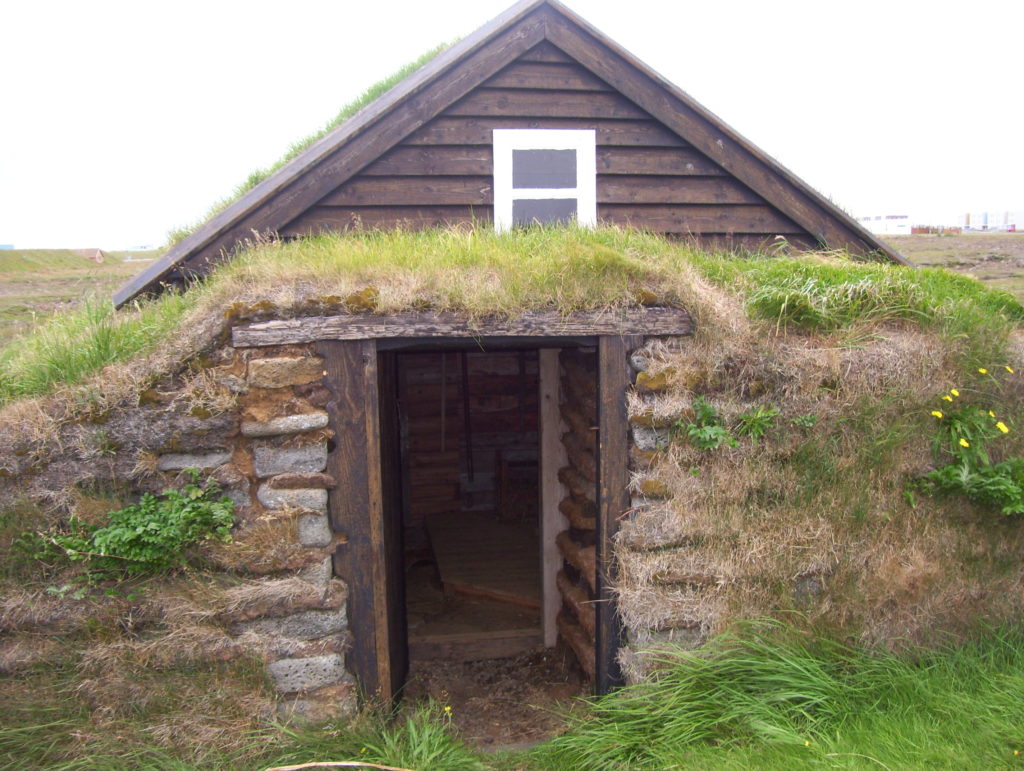“Then, when it was least expected, Gisli turned around and ran from the ridge up onto the crag known as Einhamar. There he faced them and defended himself. Everyone in Eyjolf’s party was badly wounded, and Gisli died with so many great wounds that it was an amazement to all. They say he never once backed off, and as far as anyone could see, his last blow was no weaker than the first.”
Gisli Sursson’s Saga

Our last thing to do has been done today. We visited “Viking World” near the Keflavik airport. Though the name sounds like some rip-off carnival, it was an absolutely fascinating museum in which I learned a lot about the epic history of the Vikings.
We arrived at the site only to be greeted by a young boy who could speak no more English than I could Icelandic. The boy beckoned for us to follow him, and led us inside one of the two turf-roofed huts outside the museum building. The wind and the rain was blowing harshly outside so we gladly ducked in. Inside was old fashioned–I learned it was not too long ago that all Icelanders lived in such huts. A girl sat in the corner and watched as we entered. The boy, with white hair and blue eyes, had dirt smeared all over his hands and cheeks, and I soon discovered why. Removing a rug he revealed a trapdoor and some old bones he had already obviously excavated from the cellar. Opening it he motioned for us to jump in, bringing to my mind suddenly of all the legends I’ve been reading about elves tricking people into trouble, and I had the sneaking suspicion they were going to lock us away and eat us later.
But the kid was a good tour guide, even though we couldn’t understand him, and we said goodbye after taking one last look around at the old Icelandic farmhouse.
Inside the museum was a great Viking longboat, used and abused! A clever boatmaker had created an exact replica of the old-style Norse warships, sailed it around Iceland a few times, then embarked on a voyage all the way down to New York! What an amazing journey it must’ve been. Then I learned about the great journeys the real Vikings took, risking their lives in search of more lands to rule. These pirates struck fear into the hearts of the North Atlantic ports. Though they started out only as a group of farmers pillaging and slaughtering innocent monks, the Vikings soon grew into armies led by kings, a huge, plundering, merchant empire!


What a tough people they must’ve been, through a violent age, to explore the unknown and face the hardships there. How difficult it was for Erik the Red to settle Greenland, or Leif the Lucky to cross the great expanse and discover the New World almost 500 years before Columbus–these were true adventurers! (though their motives may not have been quite so noble)
I feel quite satisfied with my trip now; though I hadn’t fulfilled my original goal in circling the island, I’ve seen incredible things that I cannot witness elsewhere, learned so much about the ancient, as well as the present, culture that I did not know before, and had the pleasure of meeting some of the nicest, and most generous Icelanders. It was all more than I could’ve hoped for. And I hope that my companions also feel good, now that the trip is done.
Though we’re returning home soon, I am sure that it won’t be long until we’re off and about again. Perhaps one day we will return to this island and finish what we started.
“Sigmund and his fellows had now got to a rock that jutted over the sea, and could hear men’s voices all round them. Then Thore said, “Let us stand at bay here, as fate will have it.” “I am not fit for fighting,” said Sigmund, “for I lost my sword when I leapt backward over the rift; let us therefore leap off the rock and betake us to swimming.” “We will do as it pleases thee,” said Thore. They took that counsel, and leapt off the cliff into the sea.”



